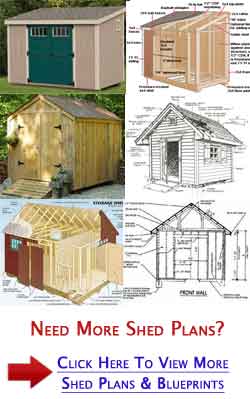 www.apartmentguide.com
www.apartmentguide.com ```html
Introduction: Building a Simple Birdhouse for Feathered Friends
Are you looking for a rewarding and inexpensive DIY project? Building a birdhouse is a fantastic way to attract birds to your yard, provide them with shelter, and enjoy their cheerful presence. This guide will walk you through the steps of creating a simple, functional birdhouse using readily available materials.
Materials You'll Need:
Untreated wood planks (pine, cedar, or redwood are good choices about 1 inch thick) Saw (hand saw, circular saw, or jigsaw) Drill with drill bits (various sizes) Screws or nails Measuring tape or ruler Pencil Sandpaper (medium grit) Wood glue (optional, but recommended for added strength) Clamps (optional, but helpful) Exterior paint or sealant (optional, to protect the wood) Step 1: Planning and Cutting the Pieces
First, decide on the size of your birdhouse. A good starting point is a base of about 6x6 inches, sides that are 8 inches tall in the front and 10 inches tall in the back to create a slanted roof, a roof piece that overhangs by an inch or two on each side, and a front piece with a hole drilled for the birds to enter. Using your measuring tape and pencil, mark the dimensions on your wood planks. Then, carefully cut each piece according to your measurements using your chosen saw. Here's a suggested breakdown of the pieces:
Base: 6" x 6" Front: 6" wide x 8" high (with a hole – see Step 3) Back: 6" wide x 10" high Sides: Two pieces, shaped like trapezoids – Bottom edge 6" wide, Top edge (roofline) to meet the roof piece, Front height 8", Back height 10" Roof: Two pieces, each approximately 5" x 8" (adjust depending on desired overhang) Step 2: Assembling the Birdhouse Walls
Begin by assembling the four walls onto the base. Apply wood glue to the edges of the base where the walls will attach (optional, but recommended). Position the front, back, and side pieces onto the base, ensuring they are flush with the edges. Use screws or nails to secure the walls to the base. If using screws, pre-drill pilot holes to prevent the wood from splitting. Clamps can be helpful to hold the pieces in place while you fasten them.
Step 3: Drilling the Entrance Hole
On the front piece of the birdhouse, drill the entrance hole. The size of the hole depends on the type of bird you want to attract. A 1 1/2-inch hole is suitable for larger birds like bluebirds, while a smaller hole (1 1/4 inch or less) will attract wrens and chickadees. Position the hole about 2 inches below the top edge of the front piece. Avoid adding a perch below the hole, as it can help predators access the nest. Sand the edges of the hole smooth to prevent injury to the birds.
Step 4: Attaching the Roof
Attach the roof pieces to the top edges of the walls. Apply wood glue (optional) to the top edges of the walls. Position the roof pieces so they overhang the front and sides of the birdhouse, providing some protection from the rain. Secure the roof pieces with screws or nails, again pre-drilling pilot holes if using screws.
Step 5: Sanding and Finishing
Once the birdhouse is assembled, sand all the edges and surfaces with medium-grit sandpaper to remove any splinters or rough spots. This will create a smoother, more appealing finish and prevent injury to the birds. If desired, paint or seal the exterior of the birdhouse with exterior-grade paint or sealant to protect it from the elements. Choose light or natural colors, as dark colors can overheat the birdhouse in the summer. Let the paint or sealant dry completely before mounting the birdhouse. Do not paint the inside of the birdhouse.
Step 6: Mounting the Birdhouse
There are several ways to mount your birdhouse. You can attach it to a pole using screws or brackets, hang it from a tree branch using wire or rope, or mount it on a fence post. Choose a location that is sheltered from strong winds and direct sunlight. Place your birdhouse in an area away from high predator activity, such as cats or squirrels.
Conclusion: Enjoy Your New Birdhouse!
Congratulations! You've built your own birdhouse. Now, sit back and enjoy watching the birds discover their new home. Remember to clean out the birdhouse once a year, after the nesting season is over, to keep it clean and healthy for future residents. With a little effort, you can create a welcoming habitat for birds and enjoy their beauty in your own backyard.
```
100+ Flats Pictures
 unsplash.com
unsplash.com What Is A Flat? Discover If This Rental Option Is Right For You
 www.apartmentguide.com
www.apartmentguide.com What Is A Flat?
 www.redfin.com
www.redfin.com  www.apartmentguide.com ```html
www.apartmentguide.com ```html  unsplash.com
unsplash.com  www.apartmentguide.com
www.apartmentguide.com  www.redfin.com
www.redfin.com  www.apartmentguide.com ```html
www.apartmentguide.com ```html  unsplash.com
unsplash.com  www.apartmentguide.com
www.apartmentguide.com  www.redfin.com
www.redfin.com  www.spendwithpennies.com
www.spendwithpennies.com :max_bytes(150000):strip_icc()/__opt__aboutcom__coeus__resources__content_migration__mnn__images__2020__03__rhode-island-hen-7f9b1b93dba8401999c52f85096fbe6c.jpg) www.treehugger.com
www.treehugger.com  kitchenaiding.com
kitchenaiding.com  www.spendwithpennies.com
www.spendwithpennies.com  au.costway.com
au.costway.com  www.mychickencoop.com.au
www.mychickencoop.com.au  www.pinterest.com.au
www.pinterest.com.au  au.costway.com
au.costway.com  barbaraiweins.com
barbaraiweins.com  barbaraiweins.com
barbaraiweins.com  www.lynns.com.au
www.lynns.com.au ![The 14 best storage units in toronto [2022]](https://i0.wp.com/torontoblogs.ca/wp-content/uploads/2022/04/surface-image-cart-with-cardboard-boxes-empty-hall-self-storage-facility-copy-space.jpg) torontoblogs.ca
torontoblogs.ca 